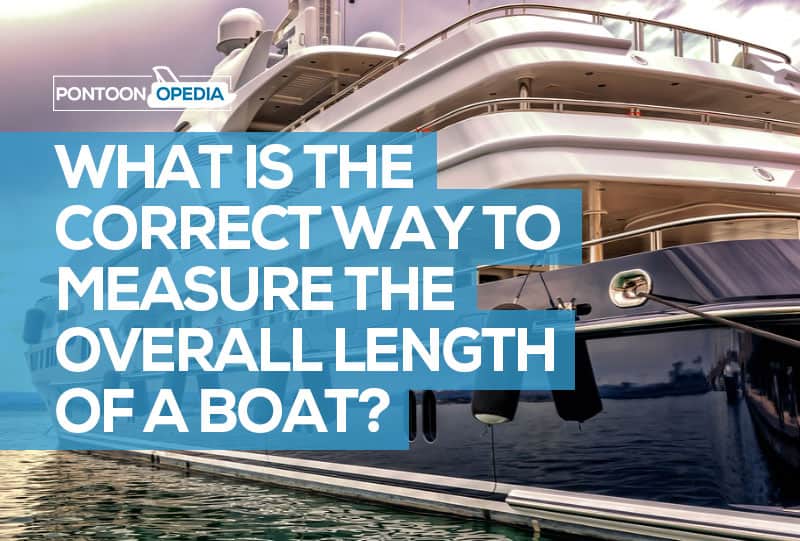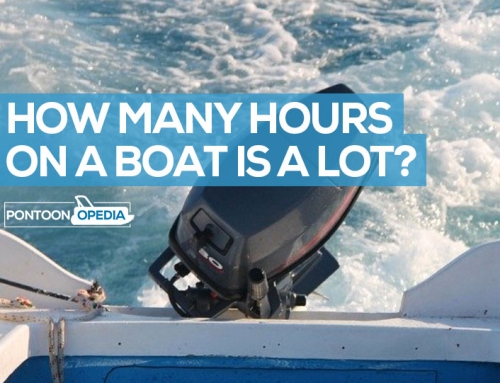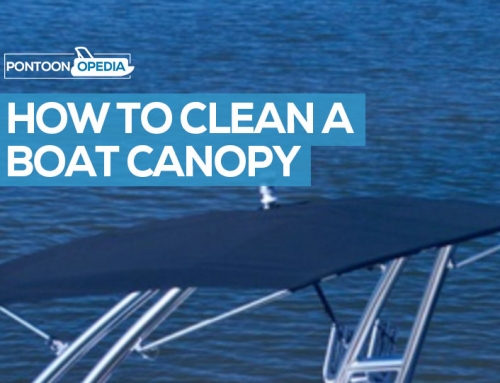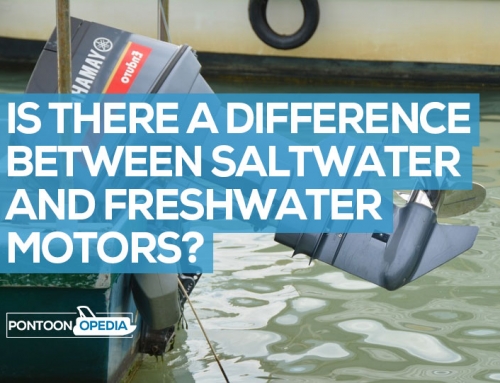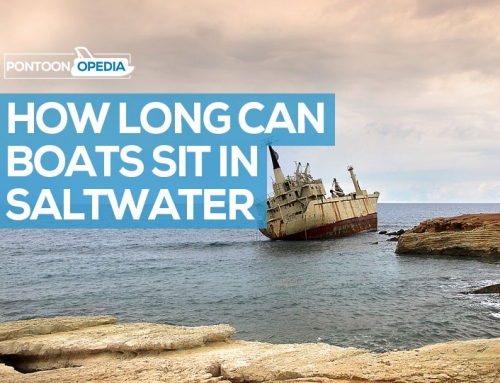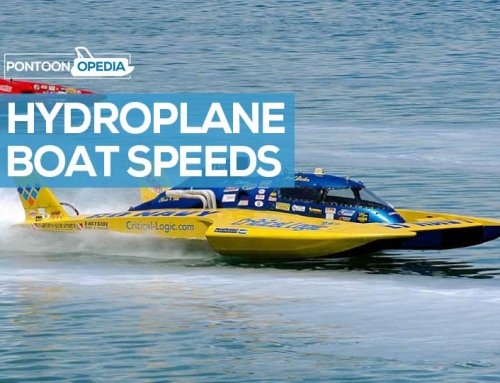When you are looking to buy a used boat, the length sellers advertise can often be a bit confusing. I learned this when buying a used pontoon, as some sellers list the length of the pontoon tubes, others list the overall length of the boat deck. So, what is the correct way to measure the overall length of a boat?
The correct way to measure the overall length of a boat is by starting from the tip of the vessel and going towards the back in a straight line. You don’t include parts such as the motor, handles and rudders.
I found this great graphic that explains how you correctly measure the overall length of a boat on the excellent Boat Ed course website.
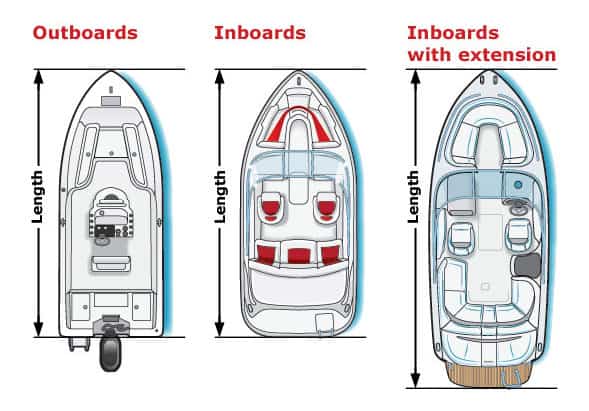
On Boat-Ed you can find this great explainer on how to properly measure how long a boat is.
Why knowing your boat’s length is important
Boats need to be maintained. You need to make sure that you provide it with the appropriate equipment. In order to do that, I suggest that you learn how to properly measure its length.
Knowing how to measure length correctly will also let you get the best insurance quote and help you when it comes to listing your boat for sale on the used market.
Handy Hint: Here are some tips on how to get the most money when selling a used boat on the second hand market.
Theinformation belowwill also come in handy on any boating trip, especially when dealing with registration and docking fees.
Keep reading to find out everything you need to know about measuring the overall length of a boat.
How to measure the length of a boat properly
It is important to measure the length of a boat because it will determine the type and amount of equipment you will need to place in the vessel.This includes items for safety and emergencies. Measuring the length can be done in just a few simple steps, as outlined in the list below.
Basic guidelinesfor measuring a boat
- The length is measured from the tip (the bow) of the boat until the stern. Measure from end-to-end. Depending on the size of the boat, this process can be done using a tape measure. Larger vessels may need additional equipment and more manpower.
- When measuring the length, the appendages are not included.
- Included in the measurement of the length are the extensions that help keep it buoyant.
Why would I need to measure the length of my boat?
Boats serve various purposes, from investments to recreation, and even business. Usually, the size of the boat will determine its function.
Knowing the correct way to measure your boat will help you with a lot of things as you will have to register and prepare your boat to be given permission to use it.
The length of the boat, along with other pertinent details such as its ownership is some of the important information that an owner has to register. No matter the size or the function, boats are an asset, and should therefore be registered.
Below are some reasons why you need to measure the lengths of your boat, along with a few more details to give you a better understanding of the importance.
- Laws and Regulations: when you acquire a boat, you have to register it. The size of your vessel will determine how much you will need to pay as Registration and other fees. This is one of the basic requirements when it comes to owning a boat. Failing to register your vessel will render it useless. Keep in mind that states have local laws regarding boating. As you prepare for your little expedition, knowing the length of the boat will greatly help you even as you shop for materials.
- Preparations: First, you will know how much and what type of equipment you will need to put in the boat. Boating activities, while fun, can still be dangerous if your vessel is not equipped. It is also no secret that boats are expensive, so when you decide to buy or loan one, you have to make sure that it is properly equipped. Make the most out of your investment by making the necessary preparations. Within this article, we discuss how to equip a boat.
- Docking: If you plan to take a cruise and want to dock your boat at a pier, you will need to make arrangements for it, ideally in advance. One of the requirements is the measurement of a boat’s length and width. This is so your boat will be assigned the appropriate area to dock or park. Docking arrangements and fees will vary from vessel to vessel, so it’s best to that this information on hand. Other required documents will be the registration and details of ownership.
- Boat registration: As previously mentioned, a boat has to be registered in order to be used. If you fail to register your boat and pay the corresponding fees, you will not be legally allowed to use it or even incur some penalties. You will not be granted the permits and licenses that you will need to operate the vessel. Boat registration is not just for shipping and fishing vessels. It is also for smaller motorized and sailboats. There is no need to register non-motorized boats like canoes and kayaks. Some states will require homemade boats to be registered, though. So be mindful of that.
A lot of people will complain about the amount of paperwork required when purchasing a boat, comparing it to the tedious paperwork that goes along with buying a house or a car.
However, it is absolutely necessary to complete before you are able to legally take your boat out onto the water, so the stress of filling out a few forms will be well worth it in the end.
Boat registration:
- Can’t be legally used without it.
- All types and sizes of boats must be registered.
- Non-motorized boats don’t need registration.
Basic boat equipment
Along with measuring the boat you are purchasing or renting, one of the first things you will have to look for are the safety features and equipment.
Whether it’s a motor malfunction or a force of nature, you’ll never want to get caught unprepared in the middle of the ocean.
Below is a sample list of basic safety equipment that should be on board with you, along with some explanations of why these items are needed. If you are a pontoon boat owner, you should also find this pontoon boat safety checklist useful.
1. Life jackets
This is to keep everyone safely afloat in the event that the boat sinks. Some people use it when they swim in the ocean to make sure that they are not swept away by the current. The number of life jackets may vary depending on the size of the vessel and the maximum capacity. If you are boating with young children, please take the time to look at the related safety equipment gear you will need in my baby boat gear list.
2. A whistle or air horn
This is to send an auditory distress signal in case you find yourself stranded. If you see a boat or some people from a not-too-far away distance, they may be able to hear you. Bystanders can be alerted of an emergency taking place nearby.
3. A flare
This is to send a visual distress signal in case you find yourself stranded in the middle of the ocean. Best used at night, as the light of the flare is brighter when its dark.
4. Fire extinguisher
In case of a fire, you will need this to stop what is causing the danger and to prevent further damage to the boat.
5. Anchor and line
This will keep the boat in place. If you get stranded, cast out the anchor and line to secure you in your place. This will make it easier for responders to locate you when you send out your visual and auditory distress signals.
6. Paddles
If the motor malfunctions, you can simply whip out the paddles and paddle yourself to safety immediately.
7. Life boat
Bigger recreational vessels will have this. In the event that the boat is too damaged or about to sink, this is where passengers are instructed to go to ensure their safety.
8. Basic first aid kit
First aid kits are some of the basic necessities in any boat, no matter what size. This will come in handy in case you or one of the passengers gets hurt.
If you’re an owner, make sure to invest in safety equipment to comply with state laws and to ensure the safety of everyone who will be on your boat. It is always better to be on the safe side and be equipped than to not have anything on hand in the event of an emergency.
Related questions
When one measures the length of the boat, what are the “appendages” of the boat that are not included?
The parts of the boat not included in its length are the rudders, motor and handles. If certain regulating bodies require the width of your boat, you will measure the widest point of the width of the boat. The length only includes that straight line between the bow and the back, including the extension.
How will I register a boat if there is a discrepancy between the length of the boat on deck and its length on the waterline?
It is not uncommon for boats to have a discrepancy in length when it is on deck and on the waterline. In cases like this you have to report the average of both measurements.
For example, if a particular vessel has a length of 30 feet on the waterline and 34 feet on deck, the length that you will register is 32 feet.
The last word…
If you have come across the article as part of your research into a Boat Ed exam or marine test quizlet, please don’t just cheat on the answers. If you plan on becoming a recreational boater, it’s essential that you know the basics inside and out.

